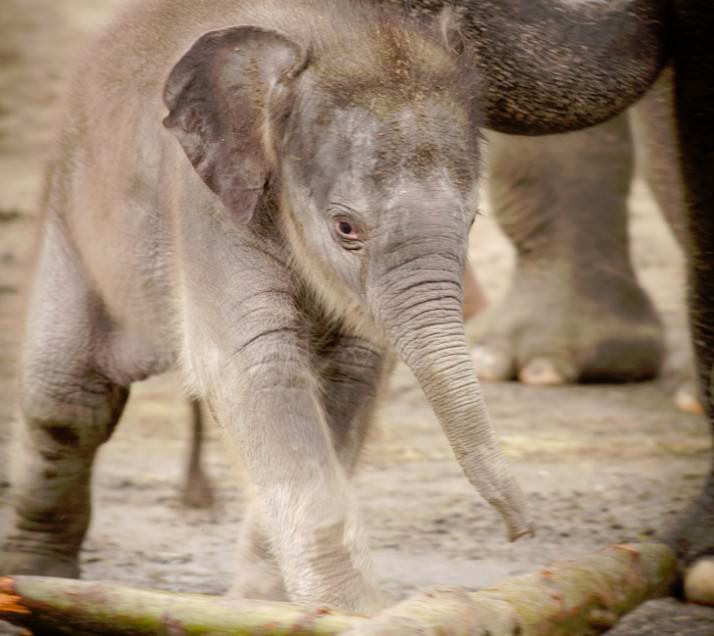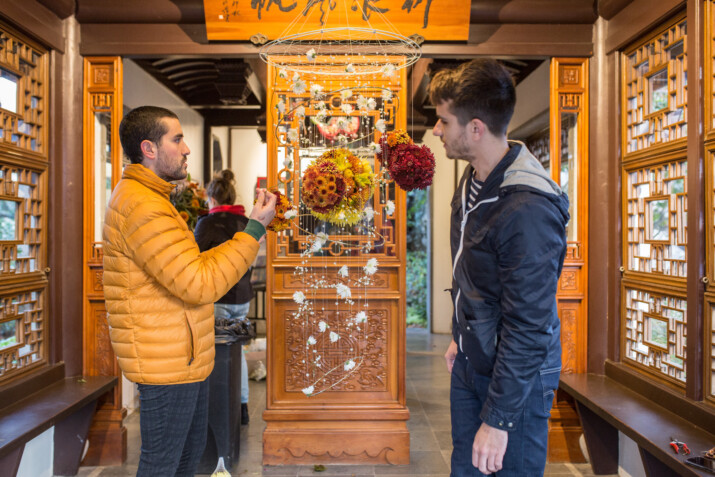Portland, OR. Oregon Zoo staff and community members are mourning the sudden loss of Lily, the youngest of the zoo elephant family, one day before her sixth birthday. Despite efforts by veterinarians and care staff to save her, Lily died Thursday, November 29th from endotheliotropic herpesvirus (EEHV), a rapidly progressing and often fatal disease to which calves are particularly susceptible. “I can’t imagine a more devastating loss for this zoo family and our community,” said Dr. Don Moore, zoo director. “Lily was the darling of the zoo. She was loved by everyone from her elephant family to the people who cared for her every day to her thousands of fans. Our staff did everything they could and fought to save her until the very end. Everyone is in mourning here. It is just heartbreaking.” You might remember, the zoo solicited the public’s help naming the Asian elephant calf. The zoo received more than 50,000 votes on its website, says Kim Smith, zoo director, along with emails, phone calls and posts on Facebook.
This is a video marking Lily’s last birthday:
And some photos of her journey:
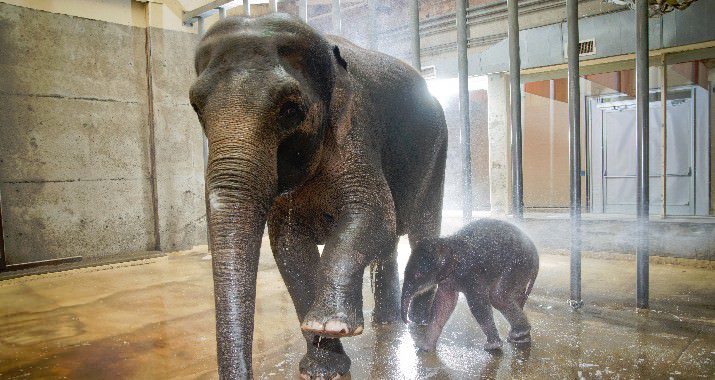
In 2013, Asian elephant mom Rose-tu and Lily get a bath from keepers in the elephant barn at the Oregon Zoo. (photo credit, Michael Durham)
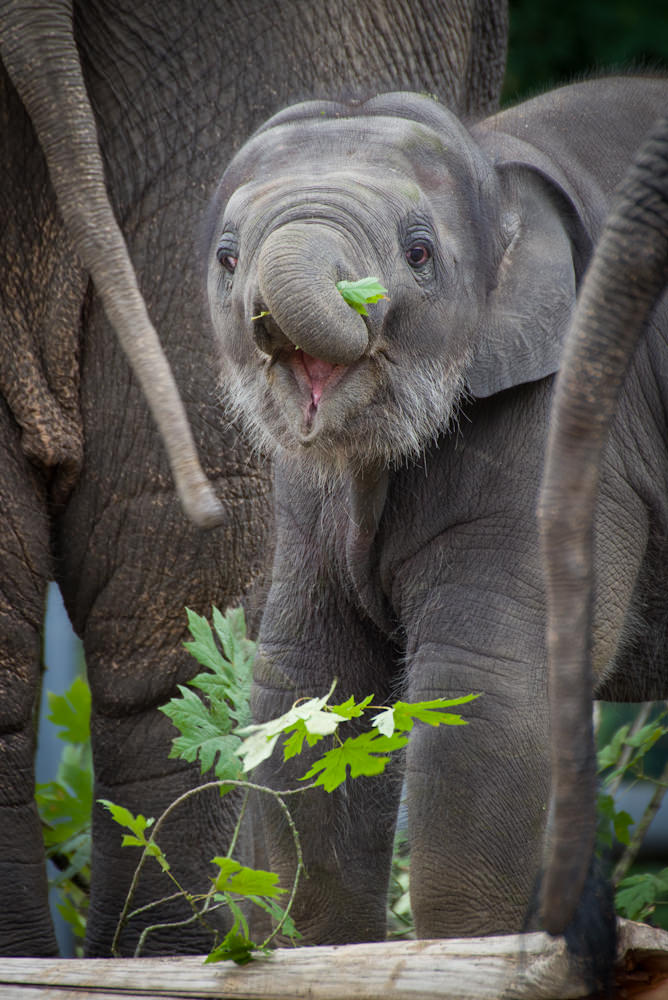
In 2013 Lily, tipped the scales at more than a 1,000 pounds, not quite 10 months after her birth. Photo by Michael Durham, courtesy of the Oregon Zoo.
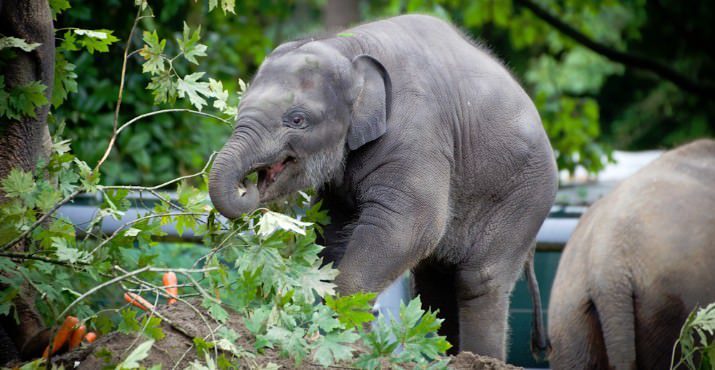
Keepers say Lily, enjoyed carrots, apples and leaves pulled from branches — just like mom. Photo by Michael Durham, courtesy of the Oregon Zoo.
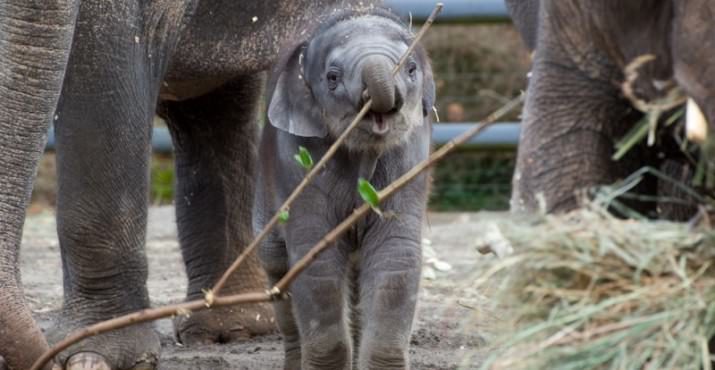
Two-month-old Lily chomps on some branches with the rest of the Oregon Zoo elephant herd. Photo by Michael Durham, courtesy of the Oregon Zoo.

Lily plays in the sand back yard of the Oregon Zoo’s Asian elephant habitat. Photo by Michael Durham, courtesy of the Oregon Zoo.

In 2018 Lily takes a swim with her mom Rose-tu in the new pool at Elephant Lands. © Oregon Zoo / photo by Kathy Street
The zoo closed all day Friday, including during the scheduled evening ZooLights, then reopened on Saturday.
EEHV is known to be present in almost all Asian elephants, both in wild populations as well as those cared for by humans. Often, it remains latent, causing mild or no symptoms, but for reasons unknown it can sometimes come out of latency and cause disease. Once the disease becomes active in calves, it is usually fatal, often causing death within few days even with intensive treatment. For this reason, the zoo routinely sends blood samples to the Smithsonian’s National Elephant Herpesvirus Laboratory.
On Wednesday, blood sample analyses from the Smithsonian’s lab revealed the virus was active in Lily at very low levels. At that time, Lily showed no known clinical signs of disease. However, the next morning, Lily began to exhibit lethargy and a disinterest in food prompting veterinary staff to begin immediate treatment with fluids and antiviral medication. She also was given a transfusion. Despite these efforts, the disease proved too much for her.
Currently there is no vaccination against EEHV. In 1999, scientists at the Smithsonian and Johns Hopkins University developed a blood test that can detect the virus when it becomes active. Unfortunately, once the virus is active, there is usually very little time to treat an elephant.
The virus affects wild elephants as well, although it is harder to identify and diagnose, and its occurrence in range countries is overshadowed by much more serious threats such as poaching, habitat loss and human-elephant conflict. Scientists have confirmed around 60 EEHV deaths among elephants in Asian range countries over the past decade.
Scientists believe most, if not all, Asian elephants in the world carry some form of EEHV — an ancient virus that has evolved along with elephants for millions of years.
For the past 16 years, the Oregon Zoo has been contributing funding and blood samples from all its elephants to the Smithsonian lab, as part of a collaborative international effort to find a vaccine or effective treatment for EEHV, which is the leading cause of death in Asian elephants under the age of 8 in North America.
“It’s very difficult to study the virus in wild elephants,” Dr. Moore said. “But zoos can monitor their elephant herds closely and obtain samples of blood and other fluids. Right now, that’s our best hope of developing a vaccine.”
About the Oregon Zoo:
The 64-acre Oregon Zoo is located in Portland, a city and surrounding metropolitan area of more than 1.5 million people. Attendance in 2015 was more than 1.5 million.
Oregon Zoo facts and numbers
The zoo’s annual operating budget is derived from a tax base through Metro, the Portland-area regional government that is the zoo’s governing body, plus zoo admissions, concessions, contributions, special promotions, the Oregon Zoo Foundation and grants.
The zoo has five major exhibit areas: Great Northwest, Fragile Forests, Asia, Pacific Shores and Africa. Within these large areas are 23 specialized exhibits.
Animals of the Oregon Zoo
- 2,697 individual animals represent 215 species or subspecies of birds, mammals, reptiles, amphibians, fish and invertebrates*
- 19 endangered species and 9 threatened species live at the zoo.*
- The zoo is active in 63 Species Survival Plans.*
Plants of the Oregon Zoo
- Native plants of the Pacific Northwest’s temperate rainforests have been cultivated to create naturalistic exhibits, pathways and vistas within the zoo.
- More than 1,000 species of exotic plants thrive in the zoo’s botanical gardens, including firebird heliconia, pelican flower and ground orchid. Some are harvested and given to the animals as browse.
*Zoo animal data as of December 31, 2015. Second line references Endangered Species Act endangered and threatened species list.



